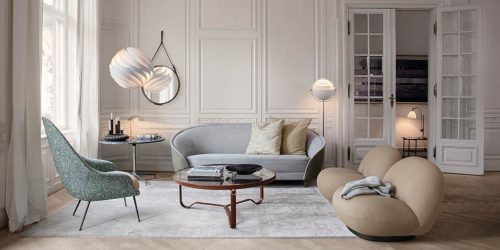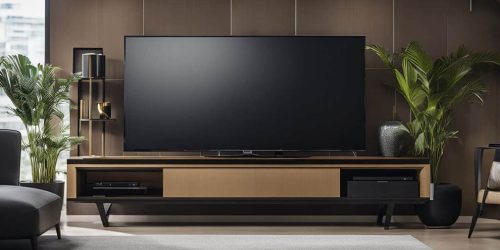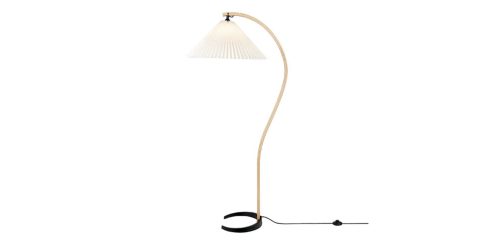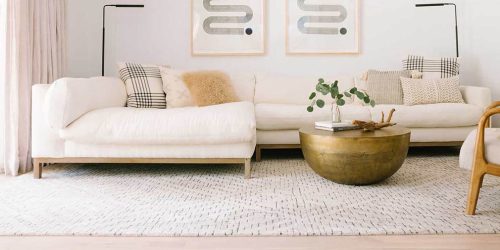Living Room Storage Design: How to Effectively Maximize Space in Limited Areas
In today’s fast-paced world, many people are living in smaller apartments or homes where maximizing space is key to maintaining a clutter-free and functional environment. Living rooms, which are often the heart of the home, are especially prone to accumulating clutter. The challenge becomes even more apparent when you have limited space to work with. However, with smart storage design strategies, it’s entirely possible to create a well-organized and spacious living room, no matter how small the area may be. In this article, we’ll explore practical and creative ways to enhance your living room’s storage potential while maintaining a stylish and comfortable atmosphere.
1. Embrace Multi-Functional Furniture
One of the best ways to save space in a living room is by incorporating multi-functional furniture. These pieces do double duty, allowing you to store your belongings while serving as seating, tables, or even decorative elements.
- Storage Ottomans: An ottoman can do more than just provide a comfortable footrest. Opt for ones with hidden compartments where you can stash blankets, magazines, or other small items.
- Sofa with Built-In Storage: Many modern sofas come with built-in storage solutions, such as drawers beneath the cushions or a hidden compartment in the armrests. This is a great way to keep things like remote controls, throw pillows, or seasonal items out of sight.
- Coffee Tables with Storage: Choose a coffee table with built-in storage. Some tables have lift-tops that provide hidden storage underneath, ideal for keeping board games, books, or electronics tucked away.
- Foldable Furniture: Consider foldable or extendable furniture pieces like a fold-out dining table or a sofa bed, which allow you to free up floor space when not in use.
2. Use Vertical Space to Your Advantage
In a small living room, floor space is often limited, but you can make use of the vertical area by going upwards. Vertical storage solutions can help keep the space organized while leaving the floor area open and airy.
- Wall-Mounted Shelves: Install floating shelves along the walls to hold books, plants, and decorative items. These shelves can be installed high up, creating storage without taking up valuable floor space.
- Tall Bookshelves: Opt for tall, narrow bookshelves that make use of vertical space while not occupying too much floor area. This is perfect for storing books, media, and even decorative accessories.
- Hanging Storage Baskets or Hooks: Consider adding baskets or hooks on the walls or behind the door for coats, hats, or bags. These are great for quick access to everyday items without taking up much room.
- Over-the-Door Storage: Don’t forget about the space on the back of your doors. You can find over-the-door racks, organizers, or hooks that provide hidden storage for anything from shoes to hats to small accessories.

3. Maximize Storage Under Furniture
When dealing with a small living room, you often need to think outside the box to find hidden storage options. One area that is often overlooked is the space under furniture, which can be utilized in various ways.
- Under the Sofa: If your sofa is raised off the ground, you can use the space underneath for storage bins or boxes. These can be used to store seasonal items, extra cushions, or even toys if you have children.
- Under the Coffee Table: Some coffee tables come with open space or drawers underneath. Use this area for storing blankets, remotes, or anything that might otherwise clutter up the room.
- Storage Bins or Baskets: Utilize decorative bins, baskets, or crates that slide neatly under your furniture to store extra items. These storage solutions add both practicality and style to the room.
4. Declutter and Keep Only What You Use
A cluttered room can quickly feel cramped, no matter how much storage you have. The key to effective living room storage is decluttering and keeping only what is truly necessary. Regularly assess the items in your living room and remove anything that you no longer need or use. This not only helps free up space but also ensures that your storage solutions are working efficiently.
- Consolidate Items: If you have multiple small items, consider consolidating them into larger containers or boxes. For example, rather than having various individual items scattered around the room, gather them into a single decorative box or basket.
- Seasonal Storage: Rotate seasonal items in and out of the living room. Items like winter coats, heavy blankets, or holiday decorations can be stored away in more compact storage areas, such as closets or storage units, until needed.
5. Designated Zones for Different Activities
In a small living room, creating designated zones for different activities can help prevent clutter from taking over. For example, you can have a designated reading nook, a media zone, and a small area for socializing. By creating these zones, you give everything a place and keep the room feeling organized.
- Create a Media Zone: Use a media console with plenty of drawers and shelves to store electronics, DVDs, and other media items. This will help keep your living room clutter-free and make it easy to access your entertainment devices.
- Designate a Reading Corner: Set up a cozy chair with a small side table and bookshelves for your reading materials. This way, books and magazines are stored neatly and easily accessible, without overwhelming the room.
- Add Modular Storage: Modular storage solutions like cube storage units or sectional shelving can be rearranged to fit the needs of your space. These units can serve as room dividers, additional storage, or display space for personal items.
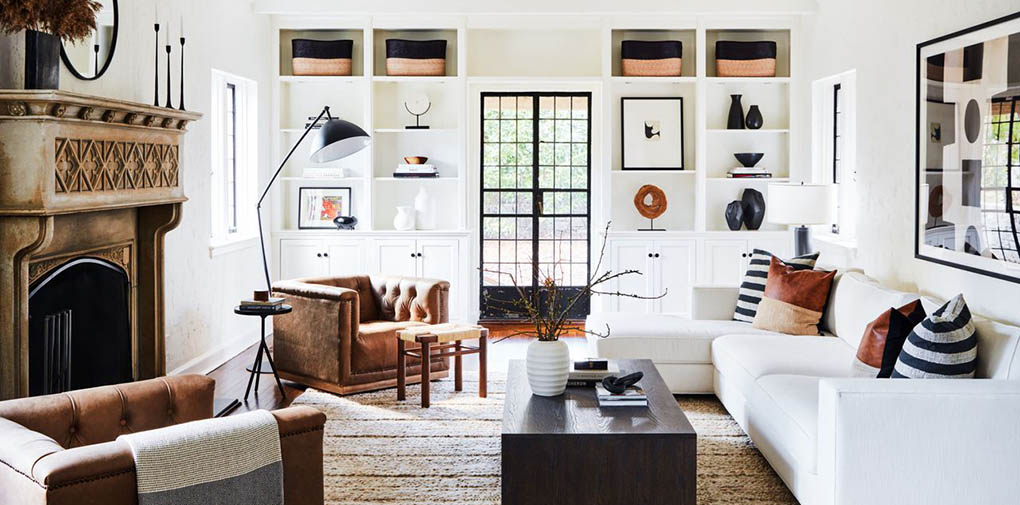
6. Use Transparent Storage Solutions
When it comes to storing items, it’s not always necessary to hide everything behind closed doors. In some cases, using clear or open storage solutions can add to the room’s design while still keeping everything organized.
- Glass Containers or Boxes: Store items in clear glass jars or boxes that allow you to see the contents. This can be a stylish way to organize smaller items, such as remote controls, coins, or office supplies.
- Open Shelves with Baskets: If you choose open shelving, balance it out with decorative baskets that keep items contained but still visible. This is a great option for storing smaller, everyday items while maintaining a clean and tidy look.
7. Incorporate Hidden Storage Solutions
For a more seamless living room, hidden storage can be the key to maintaining a sleek and organized appearance. Items like hidden compartments, built-in furniture with storage features, and cleverly designed storage pieces help conceal the clutter while still being easily accessible.
- Hidden Drawers in Furniture: Many modern living room furniture pieces come with hidden storage compartments. A coffee table with hidden drawers or a sofa with built-in storage can discreetly hold everyday items out of sight.
- Built-in Storage: If you’re doing a renovation or re-designing your living room, consider adding built-in storage elements such as custom shelving, cabinets, or even a storage bench by the window.
With a little creativity and strategic planning, even the smallest living rooms can be transformed into organized, functional spaces. By using multi-functional furniture, making the most of vertical space, and incorporating both hidden and visible storage solutions, you can keep your living area clutter-free and stylish. Remember, the key to effective storage is not just about fitting everything in, but also about creating a space that feels open, welcoming, and easy to navigate.
Ultimately, whether your living room is big or small, the right storage solutions will enhance both the functionality and aesthetics of the space, making it a place where you can relax, entertain, and enjoy life’s little moments.
